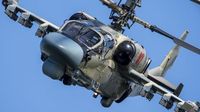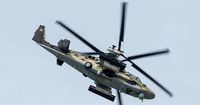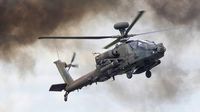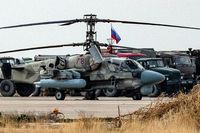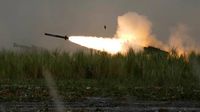Ukrainian forces have landed a significant blow against the Russian military by successfully destroying four helicopters on March 24, 2025. The attack, executed by the Ukrainian Special Operations Forces, resulted in the destruction of two Ka-52 attack helicopters and two Mi-8 transport helicopters in the Belgorod region of Russia, near Ivnya. This operation highlights the ongoing conflict's complexity and the continued efforts by Ukraine to disrupt Russian military operations.
The helicopters were targeted using American-made HIMARS missile systems, which proved effective in dismantling the Russian aviation staging point, designed for rapid deployment and unexpected attacks on Ukrainian forces. "All helicopters were destroyed by missile strikes on the enemy's rear, where the enemy established an aviation staging point — a camouflaged position for the quick movement of aircraft or surprise attacks on Ukrainian security forces," reported the Ukrainian Special Operations Forces.
The Ka-52, regarded as one of the most advanced attack helicopters in the Russian arsenal, is used for reconnaissance and ground attacks. Its capabilities are augmented by its armament, which includes a 30 mm cannon as well as anti-tank guided missiles. Meanwhile, Mi-8 helicopters serve multiple roles, including transporting personnel and cargo and providing support for ground operations.
This operation is not an isolated event but instead occurs amid critical diplomatic discussions occurring simultaneously in Riyadh, where Russian and U.S. representatives gather to negotiate terms for a possible ceasefire in Ukraine. Earlier agreements between Kyiv and Moscow had noted a pause in attacks on energy infrastructures, yet daily airstrikes indicate an unresolved tension in the region.
Interestingly, the destruction of these helicopters comes shortly after sustained air attacks from Russia targeting various Ukrainian regions, indicating the dynamic and shifting nature of the battlefield. Earlier, Ukrainian forces had engaged in significant defensive actions, managing to intercept 57 out of 99 drones launched by Russia overnight on the same day as the attack.
"Once again, we proved that for us, there are no impossible things," the Special Operations Forces confirmed in a social media post, sharing the success of their operation. This sentiment reinforces their narrative of adaptability and effectiveness in a challenging operational environment.
As drone warfare increasingly defines modern combat parameters, the use of HIMARS for this type of precision strike demonstrates both a tactical advantage and a strategic integration of Western technology in Ukraine’s defense efforts. Notably, the usage of cluster munitions during this attack, containing 180,000 fragments made of tungsten carbide, has raised awareness around the ethical implications of such weaponry, especially given the controversy surrounding cluster bombs and their prohibition by various international agreements.
The confrontation in the Belgorod region also draws attention to the precarious placement of Russian military assets just beyond the border — a decision viewed by many analysts as a tactical oversight. The base's location, roughly 55 kilometers from the nearest border with the Kursk region, raises questions about its security against adversarial actions like those executed on March 24.
Since the onset of the armed conflict in Ukraine in February 2022, Russian forces have reportedly lost over 335 helicopters and 370 aircraft. This latest strike underscores an ever-increasing strain on Russian air capabilities, as Ukraine continues to escalate its efforts to reclaim control and leverage greater military effectiveness.
As the day progresses, the situation remains fluid. Ukrainian and American officials are anticipated to continue discussions in pursuit of a lasting peace agreement, with hopes of establishing a more substantial ceasefire by April 20. With lives at stake on both sides and continuing hostilities, the road to peace appears to be fraught with challenges, yet today's developments reveal Ukraine's resilience and capability even as negotiations unfold.
